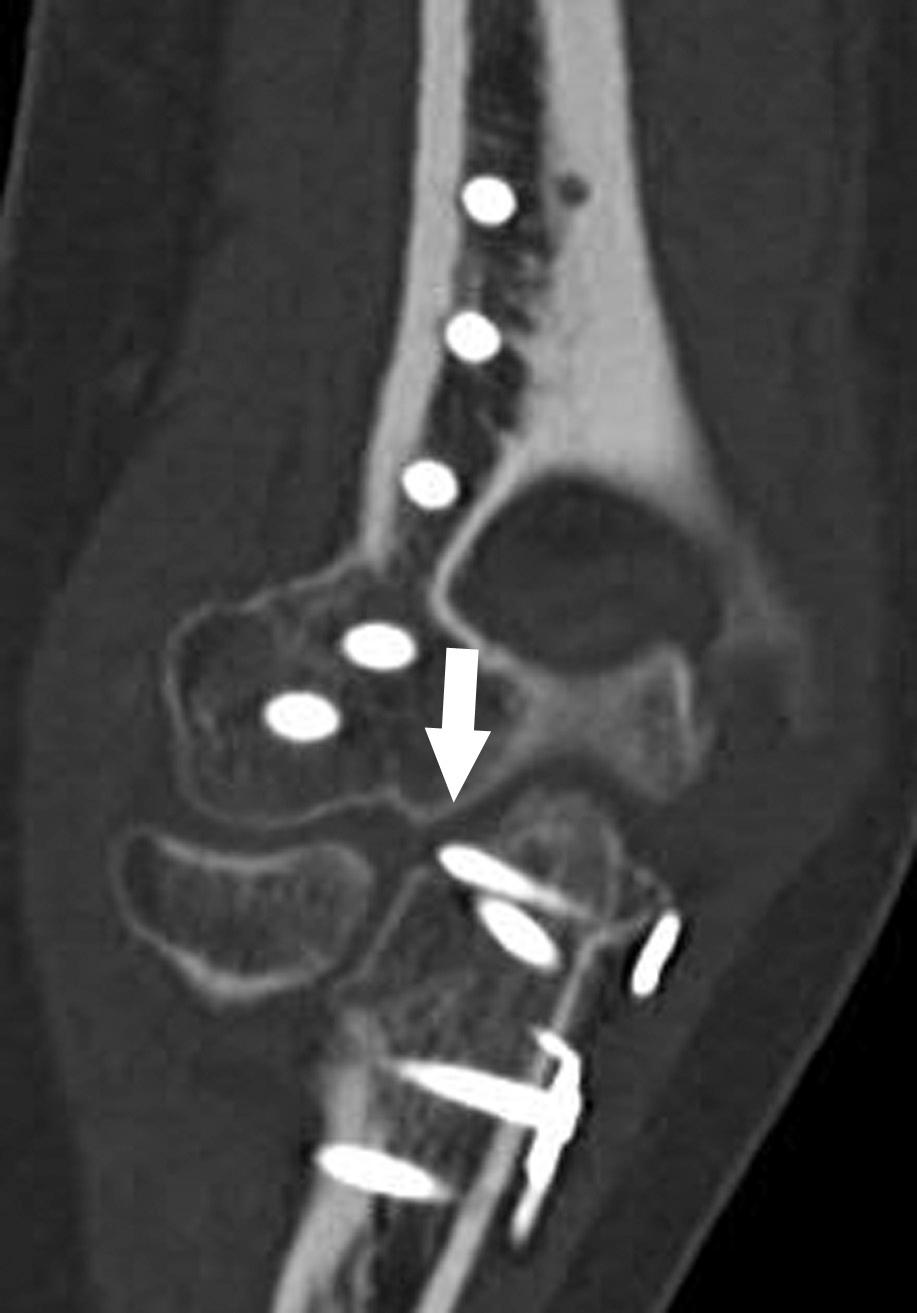Physical Address
304 North Cardinal St.
Dorchester Center, MA 02124
Extensive research and development in CT in the past decade have yielded significant enhancements in image acquisition and processing efficiency, image resolution, and reconstruction capability, as well as artifact reduction capacity. Although radiographs, MRI, and ultrasonography have broader clinical utility in the evaluation of elbow disease, the recent advances in CT technology have solidified CT as a powerful investigative tool for several clinical settings in the elbow. In the following sections we will review how CT can best be used for evaluation of elbow disease, highlighting its advantages and drawbacks when compared with other available imaging modalities.
Newer generation multidetector CT scanners are able to manipulate imaging data acquired from the area of concern to create two-dimensional reformations in any plane. Although standard coronal and sagittal plane reformations are routinely constructed for the elbow, additional oblique planes can be requested by the radiologist or orthopedist to best delineate the disease. This flexibility reduces the importance of elbow position within the CT scanner, which is often limited in both acute and chronic elbow conditions. Modern software reconstruction algorithms also allow constitution of three-dimensional imaging models, which grant a more global picture of the disease and its relationship with neighboring structures. Although the bone is generally the anatomy of most diagnostic interest on CT, the image parameters can be manipulated to optimize evaluation of the soft tissues as well.
Image quality with high spatial and high-contrast resolution is paramount in CT for accurate diagnosis. Potential artifacts, such as metal streak artifact and motion artifact, can significantly reduce the image quality. In the elbow, indwelling metal is a common hindrance for accurate evaluation of fracture healing. However, there are now software programs available with modern-generation CT scanners that effectively reduce metallic artifact, allowing clear visualization of the underlying bone in most cases. Specifically, dual-energy CT (DECT) postprocessing software has been very effective in creating images with minimal metal artifact ( Fig. 7.1 ) when compared with conventional CT. In addition to metal artifact reduction, DECT software can be used to differentiate the inflammatory urate crystals present in gout from other inflammatory crystalline diseases, such as calcium pyrophosphate and hydroxyapatite deposition disease.

Another recent and continually evolving CT innovation is software that allows radiation dose modulation. The software tailors the radiation dose on the basis of the patient's size and the anatomy in question to reduce the radiation exposure as much as possible without compromising overall image quality.
Become a Clinical Tree membership for Full access and enjoy Unlimited articles
If you are a member. Log in here